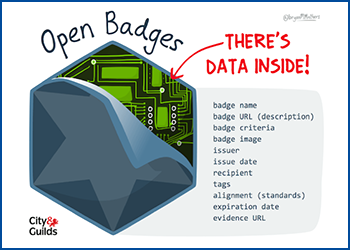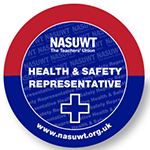In September 2022, the NASUWT, in partnership with the TUC, introduced an innovative means of accrediting union activists and the learning and skills they develop, through the NASUWT’s education programme.
The plan is for these digital credentials to replace the current method of acknowledging union learning through the issuing of paper certificates
What is a Digital Credential?
A digital credential, sometimes referred to as a badge, is an online representation of the skills an individual has earned along with the knowledge gained. It allows them to verify these skills, interests and achievements through credible organisations such as the NASUWT.
Digital credentials are portable and can be displayed in a way that makes sense to the user. For example, credentials can be shared in a Profile page, on a professional profile such as LinkedIn, and on social media sites such as Facebook and Twitter. They can also be shared in a CV, stored in a learning management system (LMS) or embedded into your email signature to share with others.

There are several important differences between paper certificates or digital badges and digital credentials:
-
They are verifiable. They contain built-in data that link back to the issuer, criteria and any verifying evidence.
-
They are evidence-based. The information about who, why and for what the credential is issued is hard-coded into it as metadata.
-
They put the earner of the credential in control. Digital credentials are private until they are published or shared by the person who has earned the credential. They provide an easy way to show a portfolio of skills without third parties having to wade through a mountain of data.
Why is the NASUWT introducing digital credentials?
There are benefits to both the Union and to our activists. These are:
-
the focused monitoring of NASUWT members’ training;
-
in order to comply with the Union’s policy on its green credentials/sustainability goals;
-
learners find encouragement from the recognition of their achievements;
-
learners are able to maintain ownership and control of their awards;
-
digital credentials are a simple, yet effective and visually appealing way to recognise achievements;
-
training is more effective when learners are motivated to learn, share, interact and collaborate. Digital credentials can be issued to learners for actively participating in a course and displaying certain skills and knowledge;
-
digital credentials advertise knowledge, skills, and qualifications for new roles within an organisation or to prospective employers.
What will it cost?
There is no cost to learners and the Union recommends the use of Credly Acclaim as their Badge Profile page.
Learners can register with Credly - again there is no cost to the learner.
Which courses will be accredited using the new system?
The portfolio of digitally accredited learning can be found on the NASUWT Credly landing page.
NASUWT Workplace Representatives Course

The first course to be digitally accredited was the NASUWT Workplace Representatives Course, with all learners being invited to take up the offer of digital accreditation from the start of the 2022/23 academic year.
Health and Safety Representatives (Stage 1) Course

From September 2023, all learners who attend the NASUWT Health and Safety (Stage 1) Course will be invited to take up the offer of a digital credential. We will also be inviting Health and Safety Reps who have undertaken their Stage One training since summer 2020 to take up the offer of a digital credential.
Reps should check their emails for further information and an invitation.
Your feedback
If you require a response from us, please DO NOT use this form. Please use our Contact Us page instead.
In our continued efforts to improve the website, we evaluate all the feedback you leave here because your insight is invaluable to us, but all your comments are processed anonymously and we are unable to respond to them directly.
